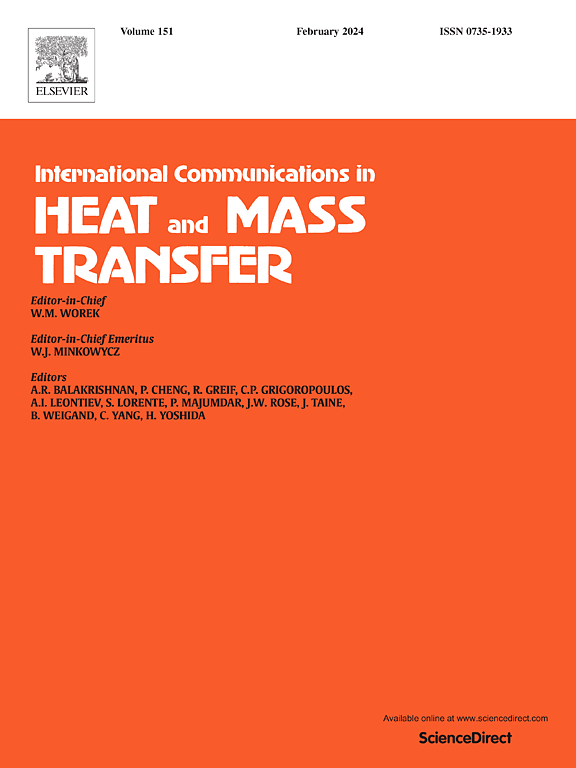Simulation of dendritic growth on a spherical surface using a multi-component phase-field model
IF 6.4
2区 工程技术
Q1 MECHANICS
International Communications in Heat and Mass Transfer
Pub Date : 2025-06-24
DOI:10.1016/j.icheatmasstransfer.2025.109195
引用次数: 0
Abstract
We consider a numerical algorithm for a phase-field mathematical model of multiple dendritic growth on a spherical surface. One numerical method for curved surfaces is a triangular mesh-based computation method for surfaces. Calculating the governing equations with anisotropic properties using interface angles in a triangular grid is a significant challenge. To solve this issue, we compute the phase-field equation by rotating the triangular mesh relative to the vertex of the crystal seed and then projecting and interpolating it to Cartesian coordinates. When projecting the triangular mesh onto Cartesian coordinates, we apply an adaptive block region that embeds each dendritic phase. The growth simulations of multiple crystals present additional challenges. For multi-crystals, the criteria for rotation are ambiguous; hence, the criteria for rotation are clarified by applying the vector-valued phase-field equation to resolve this problem. Various numerical experiments are conducted on a spherical surface to verify the reliability and robustness of the proposed numerical algorithm to solve the phase-field equations of multiple dendritic growth. We comprehensively present the computational results, and show compelling evidence that validates the reliability and robustness of our computational method.
用多分量相场模型模拟球面上枝晶生长
考虑了球面上多枝晶生长相场数学模型的一种数值算法。曲面的一种数值计算方法是基于三角网格的曲面计算方法。利用三角网格中的界面角计算具有各向异性的控制方程是一个重大挑战。为了解决这个问题,我们计算相场方程,通过旋转三角网格相对于晶体种子的顶点,然后投影和插值到笛卡尔坐标。当将三角形网格投影到笛卡尔坐标上时,我们应用自适应块区域嵌入每个树突相。多晶体的生长模拟提出了额外的挑战。对于多晶体,旋转的标准是模糊的;因此,通过应用向量值相场方程来解决这一问题,阐明了旋转的判据。在球面上进行了各种数值实验,验证了所提数值算法求解多枝晶生长相场方程的可靠性和鲁棒性。我们全面提出了计算结果,并展示了令人信服的证据,验证了我们的计算方法的可靠性和鲁棒性。
本文章由计算机程序翻译,如有差异,请以英文原文为准。
求助全文
约1分钟内获得全文
求助全文
来源期刊
CiteScore
11.00
自引率
10.00%
发文量
648
审稿时长
32 days
期刊介绍:
International Communications in Heat and Mass Transfer serves as a world forum for the rapid dissemination of new ideas, new measurement techniques, preliminary findings of ongoing investigations, discussions, and criticisms in the field of heat and mass transfer. Two types of manuscript will be considered for publication: communications (short reports of new work or discussions of work which has already been published) and summaries (abstracts of reports, theses or manuscripts which are too long for publication in full). Together with its companion publication, International Journal of Heat and Mass Transfer, with which it shares the same Board of Editors, this journal is read by research workers and engineers throughout the world.

 求助内容:
求助内容: 应助结果提醒方式:
应助结果提醒方式:


